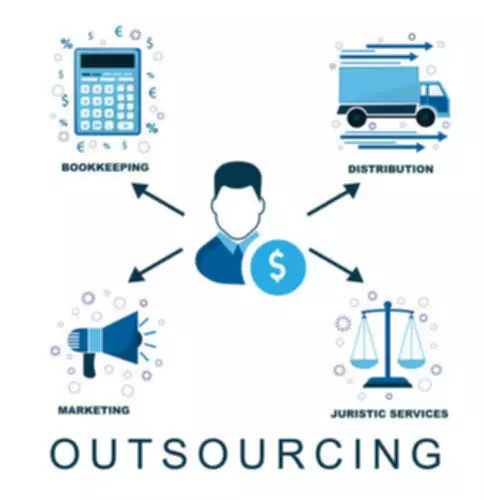Content

The accounts payable account is usually the only controlling account in most companies. However, some companies may find it convenient to utilize more than one controlling account in cases where the company has several accounts payable creditors that are similar (e.G., Suppliers of certain types of equipment or supplies). The accounts payable ledger is a subsidiary ledger that lists the individual accounts of creditors. This section will look at the transactions for Fooz Ball Town and how to post to subsidiary ledgers for accounts receivable and accounts payable.
Following this idea, automating the accounts payable and receivable control activities is a good way to ensure information security and allow data to be stored and processed strategically and productively. Control accounts are typically used in larger organizations that have hundreds or even thousands of transactions. Control accounts are part of double-entry accounting, which states that any debit posted to the general ledger will have a corresponding credit posted to the general ledger as well. The vendor balance for Gus Grass is $0 and the accounts payable balance is $0. Since both are zero and match, it would not be necessary to prepare a schedule of accounts payable. If there is a balance, a schedule of accounts payable would be prepared in the same manner as accounts receivable.
Complete a Three-Way Match
Any discrepancy or error is rectified before posting the same in the main ledger. A control account, also known as a summary account, is a general ledger account that summarizes and consolidates the balances of multiple related subsidiary ledger accounts. Control accounts are used to simplify the process of tracking financial transactions and to ensure the accuracy of financial records by providing a high-level view of financial activities. A creditors control account is also called a payable control account or purchases ledger control account because the account is created to indicate the sum of the business creditors.

The factor pays upfront for the receivables and then collects them from the original debtor in exchange for a small fee. This saves companies the need to wait 30 to 90 days to get capital, preserving their cash flow and allowing them to meet control account their obligations on time or seize new business opportunities. Control accounts could also be used for accounts payable, equipment, and inventory. A different person can maintain the control account as a preventive measure against fraud.
AccountingTools
For example, if the sales account balance is transferred, the sales account will be debited, and the sales control account will be credited. The payables staff matches the supplier invoice to the related purchase order and proof of receipt before authorizing payment. This approach supersedes the need for individual invoice approval, since approval is based on the purchase order instead. It is also better than approving only based on the purchase order, since it also verifies receipt of the goods. However, it is also painfully slow and can break down if there is missing paperwork.
In turn, a subsidiary ledger is a means to document the individual transactions that make up the general ledger controlling account balance. The subsidiary ledger provides an opportunity to better monitor the individual transactions of a particular controlling general ledger account. Control accounts commonly supported by subsidiary ledgers include the accounts receivable and accounts payable accounts. A control account is a general ledger account that contains the summarized amounts of transactions made within the business. Also, this account is called a controlling account since it promotes the performance of reconciliation control concerning the ending balance. Therefore, this account enables individuals to reconcile the total balance of the subsidiary ledger with the aggregate balance to be applied within the trial balance.
Chapter 14 – Control Accounts
This would mean that the creditor who supplied the equipment would have a negative balance in the accounts payable ledger. The accounts payable account is also called the sundry creditors’ ledger, purchases on account ledger, and creditors’ ledger. The accounts payable ledger is not a separate set of books from those used for general accounting purposes.

In the case of accounts payable, it is possible to find direct expenses, which refer to expenses with labor, raw material and sales commissions. In addition to these, we have the fixed bills, which refer to salaries, water and electricity bills, and accountant’s salary, among others. For example, Jim’s hardware store invoiced two customers for a total of $700. Imagine your trial balance or balance sheet with hundreds of transactions appearing on it. This would make it difficult to prepare a trial balance or financial statements.
Require an Additional Check Signer
An inactive account can be removed from the accounts payable ledger by entering a closing transaction to close out the account. A balance sheet for the subsidiary ledger would then be reported in the General Ledger https://www.bookstime.com/articles/sales-journal without showing an amount in this closed out account. That is to say, when all posting is complete, the balance of the Accounts Payable account will equal the sum of the balances of the creditors’ accounts.
- Posting into all control accounts must be completed before the books can be closed at the end of a reporting period; otherwise, transactions may be stranded in a subsidiary ledger and not be reflected in the financial statements.
- They show the balance of transactions detailed in the corresponding subsidiary account.
- When using a control account for accounts receivable, a variety of subsidiary transactions will be included in the control account balance.
- If the balance does not match, it is possible that a journal entry was made to the control account that was not also made in the subsidiary ledger.
- Control accounts, also known as “summary accounts,” are used in double-entry bookkeeping and accounting systems to summarize and reconcile the activity in a group of related accounts.
If the amount of a check exceeds a certain amount, require a second check signer. This control supposedly gives multiple senior-level people the chance to stop making a payment. In reality, it is more likely to only introduce another step into the payment process without really strengthening the control environment.
Negotiate the accounts
In accounting, a control account (also known as master account) is an account that contains only summary amounts of a subsidiary ledger. When using a control account for accounts receivable, a variety of subsidiary transactions will be included in the control account balance. If you have hundreds or thousands of customers or bills to pay, you should be using accounting software, which eliminates the need to set up control accounts because they’re automatically included in the structure of the chart of accounts. For example, if a purchase of equipment on account were not paid for by the end of the fiscal year, the balance of the equipment account would be a debit in the accounts payable ledger.
- This control works best where purchase orders have already been used to authorize a purchase.
- Control accounts are part of double-entry accounting, which states that any debit posted to the general ledger will have a corresponding credit posted to the general ledger as well.
- The articles and research support materials available on this site are educational and are not intended to be investment or tax advice.
- Control accounting both helps produce clean financial reports, and provides checks and balances for accurate reconciliation.
- These stock item lists are derived from subsidiary ledger accounts of an individual stock item.
As mentioned earlier, accounts receivable (or AR) refers to the amount of money owed to your company by your clients. Billie Nordmeyer works as a consultant advising small businesses and Fortune 500 companies on performance improvement initiatives, as well as SAP software selection and implementation. During her career, she has published business and technology-based articles and texts. Nordmeyer holds a Bachelor of Science in accounting, a Master of Arts in international management and a Master of Business Administration in finance. As for accounts receivable, they are related to revenues from products and services. The record should also include future receipts or amounts that the company is yet to obtain.
